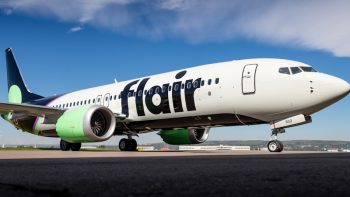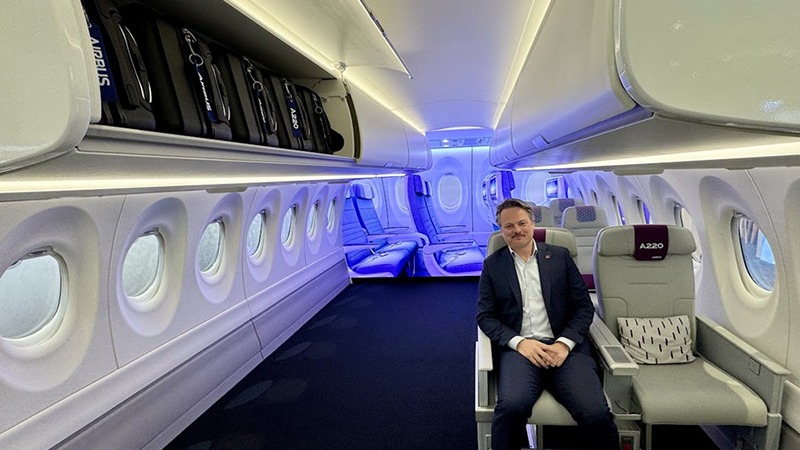
Air Canada will be the launch customer for the Airbus Airspace cabin on the A220 family of aircraft, and that means customers will be getting more overhead storage space.
The A220 Airspace cabin’s XL bins, which should debut next March, will boost the overhead capacity of bags by more than 15%, which translates to roughly 19 more bags per plane.
The announcement came 08APR during an Airbus media briefing at the Aircraft Interiors Expo (AIX) in Hamburg, Germany.
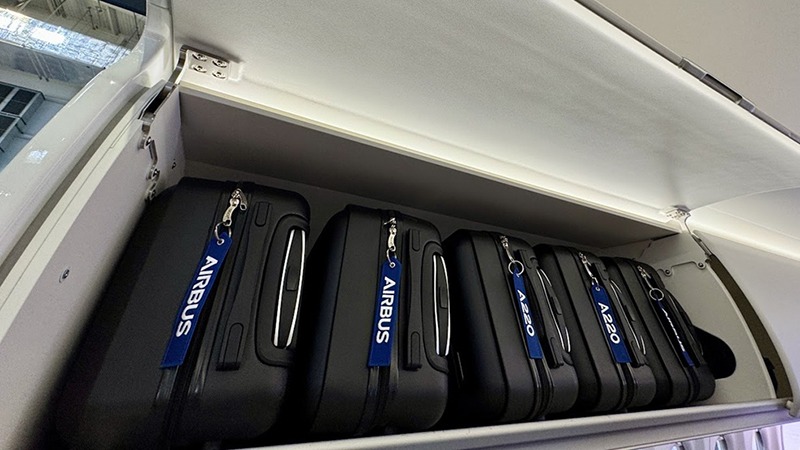
“It means less friction for customers in the cabin, easier bins to get in and out of, an easier work environment for our crews,” said Air Canada’s John Moody, Managing Director, Onboard Product. “It means less potential bags that need to be removed from the cabin and checked. Major improvements in OTP. It really is sort of a win-win for customers, for our crew and for the operation.”
Air Canada currently operates a fleet of 34 A220-300 — manufactured in Mirabel, Quebec — with 31 more on order. The first XL bins will be delivered on the 43rd aircraft but there are no immediate plans to upgrade the first 42.
Aircraft 43 won’t be dedicated to any specific market, but might fly everything from short Toronto-Ottawa routes and longer Montreal-Seattle routes to cross-country flights between Halifax and Vancouver or Victoria.
“You can imagine that’s going to go virtually anywhere within North America,” promised Moody. “And it has some level of Caribbean.“
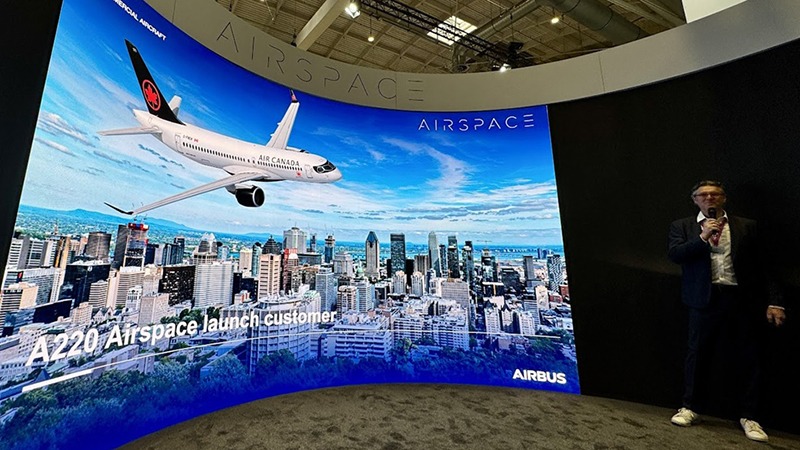
Vlad Milea, Airbus product development leader in charge of the production of the Airspace cabin, told Open Jaw that allowing passengers to bring more personal items and store them in larger bins will create more comfortable cabins.
He said the extra 20% volume allows for 15% more baggage capacity so roughly 19 more bags. At the same time, a lighter bin weight — 20% less, or 136 kilograms — allows for 10% more payload. This weight savings compared to the previous cabin version, “will help to either provide more payload capacity, so additional bags, or to actually have a lighter cabin which in the end helps to decrease the C02 footprint to be overall closer to our decarbonization targets.”
Moody also detailed why having these A220s designed and built in Canada is special. “We were an early purchaser of this aircraft and we continue to increase the number of airplanes we’re going to take because this really is the Swiss army knife of airplanes for Air Canada.”
He gave a sneak peak of the cabin interior, with its new ceiling design and lighting, and talked about improved seat back entertainment and high-speed internet.
Moody spoke about “the desire for consistency and also the desire to push things forward,” and why Air Canada decided to make this cabin change in the middle of aircraft deliveries.
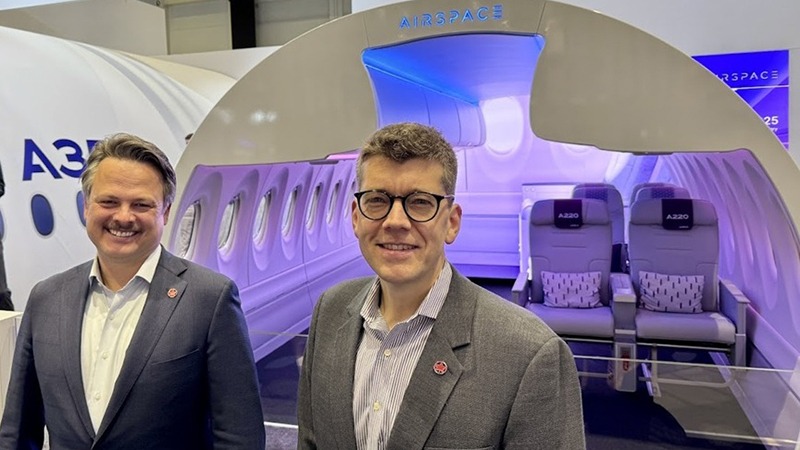
“One reason is the opportunity to improve on-time performance,” Moody told Open Jaw. “And that sounds like a very sort of pragmatic thing but it’s important. In everything we do, the most important thing is to get customers from A to B, safely, comfortably and on time. And so anything we do that improves our ability to improve the schedule is worth it.”
This change will also allow his team to insert its new “glowing-heart design” ethos and language into the A220 fleet with everything from textures, colours and materials to how Air Canada speaks to customers.
“If you’re familiar with Air Canada, you can see that the cabin is a lot warmer than it has been in the past and that is on purpose,” he said during his media briefing. “What we want to deliver is that sort of warm personality, that warm caring that Canadians are known for.”
Moody has been coming to AIX — the world’s leading marketplace for airlines and the supply chain market to meet — for 15 years. “The things that we’re looking at right now are the planes that you’ll see in 2028, 29, 30,” he said. “It takes a number of years to go through that process.”


